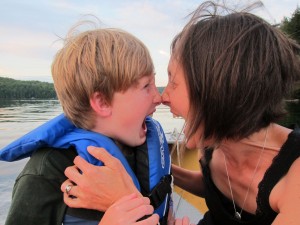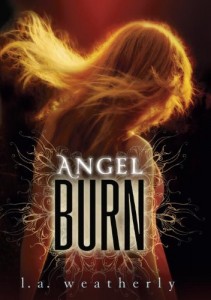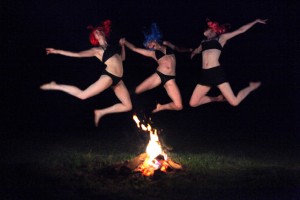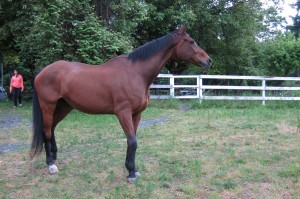 As I type, my back, shoulders, and arms are very sore from archery practice. The bow in the picture is a compound bow with a 30 lb draw, which means it takes 30 lbs of force to pull the string past the point of highest resistance. After that, it is relatively easy to hold, allowing the archer time to aim with care. It’s a very different technique than with a long bow, which is generally a fast draw and shoot affair. In either case, however, it takes a lot of practice to become a consistent shot. And if I switch bows or arrows or move back or if there’s wind, I have to make many adjustments in order to continue to hit the target.
As I type, my back, shoulders, and arms are very sore from archery practice. The bow in the picture is a compound bow with a 30 lb draw, which means it takes 30 lbs of force to pull the string past the point of highest resistance. After that, it is relatively easy to hold, allowing the archer time to aim with care. It’s a very different technique than with a long bow, which is generally a fast draw and shoot affair. In either case, however, it takes a lot of practice to become a consistent shot. And if I switch bows or arrows or move back or if there’s wind, I have to make many adjustments in order to continue to hit the target.
A writing career is very similar. We have to constantly adjust to changing conditions and always re-focus on the target. In January of every year, my critique group, Viva Scriva, has a goal-setting meeting. We review the preceding year and set our sites anew for the coming one.
Here’s what my 2011 goal list looked like:
- Spend Jan-May finishing the first draft of my new YA novel.
- Focus on building my relationship with my agent.
- Build the VivaScriva website.
- Spend June-August researching new nonfiction book.
- Spend Sept-Dec drafting aforementioned nonfiction book.
- Rebuild my website.
- Write those two magazine articles I didn’t get to in 2010.
- Keep up with my newsletters.
- Book 4-6 school visits or conference talks.
- Build a solid marketing resource book for myself and the Scrivas.
So how did I do?
Pretty darn well on 2, 3, 6, 8, and 9. (I’m especially proud of both my website and the Scriva site). The “new YA” novel (1) is at about 50K words (2/3 done probably). I had to set it aside in July when I signed on to write a YA novel for Angel Punk (I know there are worse problems to have!), but it’s far enough along that I’m confident that I can finish it up when I have some time. Plus I’m about 55K words into Angel Punk so I do deserve a self-congratulatory pat on the back for writing well over 100K words in 2011. 4, 5 and 7 were scuttled, and 10 is a jumbled pile of papers in a corner of my office.
Looking over the last year, I see that the target I was aiming at changed dramatically with the contract for Angel Punk. All my goals had to be readjusted, but my core direction remained and remains the same: to write for kids and teens about heros, adventurers, and scientists.
I’ll leave you with a great TED video in which Richard St. John answers the question: “What Leads to Success?” In it, he talks about the eight secrets of successful people include focus and hard work – keys to archery as well as writing.
What were your goals for 2011? How was your aim?

 When we meet someone new, the storytelling begins. We deliver the cleaned-up, well-practiced narrative of our lives with the smooth proficiency of a pitchman. We spin it to impress, to entertain, to woo. If—after time—that someone seems a likely lover or a potential friend, we flesh out the plot with all its nuances of regret and loss, its pains and unfulfilled desires. We are revealed.
When we meet someone new, the storytelling begins. We deliver the cleaned-up, well-practiced narrative of our lives with the smooth proficiency of a pitchman. We spin it to impress, to entertain, to woo. If—after time—that someone seems a likely lover or a potential friend, we flesh out the plot with all its nuances of regret and loss, its pains and unfulfilled desires. We are revealed.
 I read somewhere (or more likely, heard on NPR) the idea that all people can be divided into order people and chaos people. And while I tend to throw gross generalizations under the bus, I have to say there are very few people who inhabit the middle ground between order and chaos. That’s not to say there isn’t a gradient. Of course, there is. But we tend to approach the world in one of these two ways.
I read somewhere (or more likely, heard on NPR) the idea that all people can be divided into order people and chaos people. And while I tend to throw gross generalizations under the bus, I have to say there are very few people who inhabit the middle ground between order and chaos. That’s not to say there isn’t a gradient. Of course, there is. But we tend to approach the world in one of these two ways.


